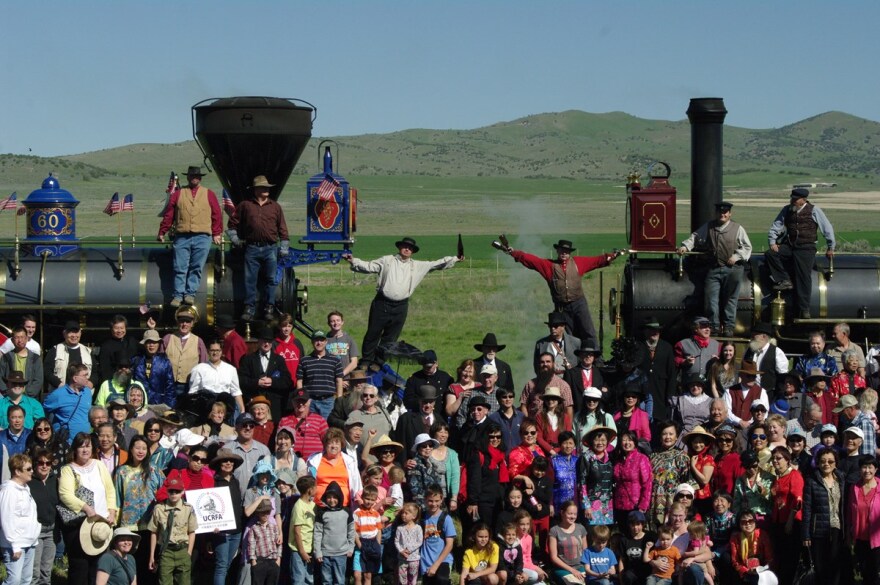As part of the 150th anniversary of the completion of the transcontinental railroad a lot of attention has been turned to the Golden Spike National Historical Park. Park employees has been plenty busy preparing for three days of celebration at the park.
The site where the transcontinental railroad was completed in 1869 has seen plenty of changes over the past 150 years. The park’s Special Events Coordinator Julie Blanchard outlines the timeline of the site.
“The railroad came through here for approximately 38 years," Blanchard explained. "Once it was no longer necessary to have the rails out here, they stopped using it. In ‘42 they actually came out here and pulled up all the rails so they could repurpose it in military depots during the war. It officially became part of the National Park Service in 1965. The visitor center was completed in 1969 in time for the 100-year anniversary of the completion of the railroad.”
Blanchard says the location most popular in the park is the actual site of where the golden spike was driven into the ground located directly behind the visitor center.
“Usually the sight everybody wants to come and see," Blanchard continued. "Besides checking out some of the exhibits that we have inside the visitor’s center. Other things to see in the park are two driving tours where you can drive on the original grade of the railroad. We also have a hike in the park as well that hike takes you out onto the big fill which was an area, a big ravine, that was filled in by the central Pacific to place the railroad grade and track on top of.”
Blanchard explains they don’t have any upgrades or expansions planned at the park but the upgrade from a national historic site to a national historic park will bring about change.
“It probably will increase visitations out here to the park," Blanchard said. "A lot of times when people think of a historic site, they think of something along the roadside. You often just breeze right past those things and not very many people stop. Sometimes I think that's what visitors think when they hear this site, but when they hear the park then they think well maybe there's a little bit more to the place then just one thing. We really are, you can see a lot of the construction features that took place by both railroad companies that were building grade through this area. So, it just kind of incorporates a little bit more than just that one site. There's quite a bit to see and do here in the park.”
Although the average yearly visitation numbers are 60,000 people, Blanchard expects over the three days of the celebration visitation could potentially reach tens of thousands. She expects visitation will be high for the rest of the year as well.
Blanchard says they’ve been preparing for the celebration for the past two years. May 10th, the actual date of the celebration is sold out, but she says there will be plenty of opportunities on the 11th and 12th to celebrate.
“There are still parking passes to be purchased for the 11th and the 12th. Really the only different between coming on the 10th and coming the other two days is that we're not going to have all the dignitaries out here having special remarks and the keynote speaker," Blanchard explained. "The other festivities happening, the historical reenactment, the as one performances, the festival area which is going to include a frontier village. There will be STEM activities out there for the kids in partnership with Hill Air Force Base. There will be historical exhibits out there talking about the history of the place.”
The celebration will continue on a smaller scale past the weekend and throughout the summer.
“The locomotives will continue to operate throughout the summer so every day visitors would be able to see those locomotives in operation," Blanchard said. "On Saturdays and holidays throughout the summer they do the historical reenactments typically at 11:00 o'clock and 1:00 o'clock on those days. So people can still get a chance to see that historical reenactment take place at the site.”





